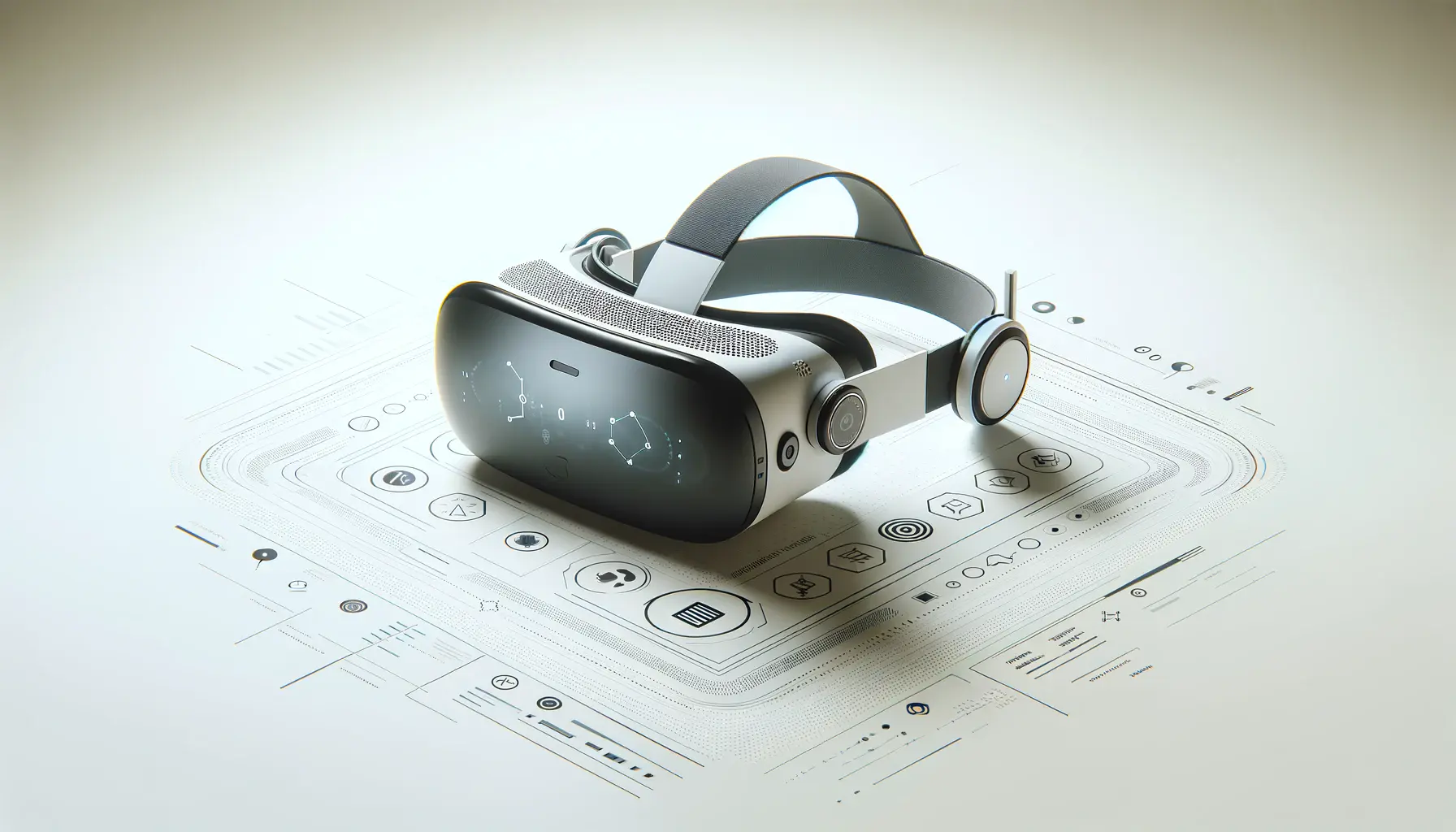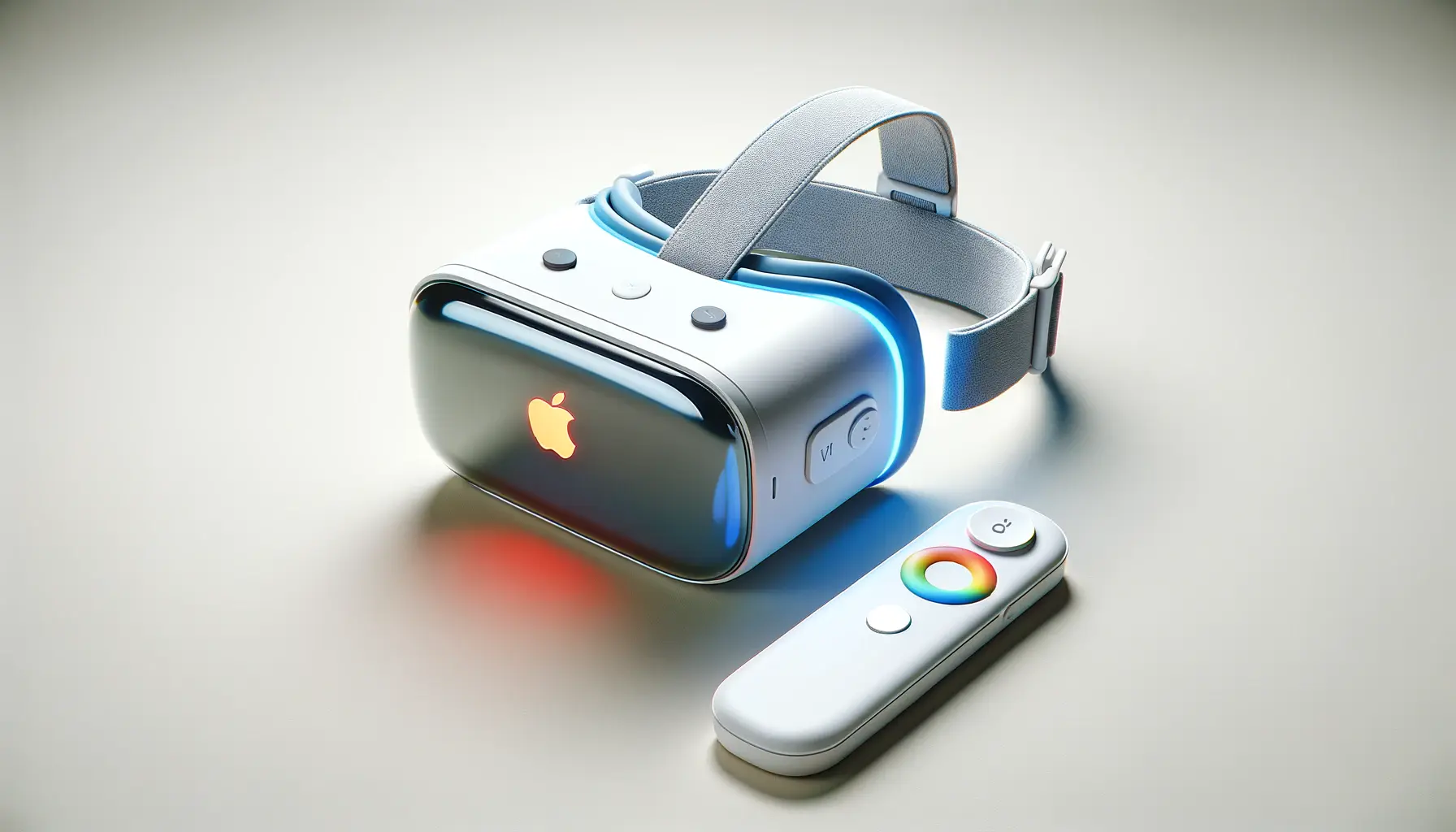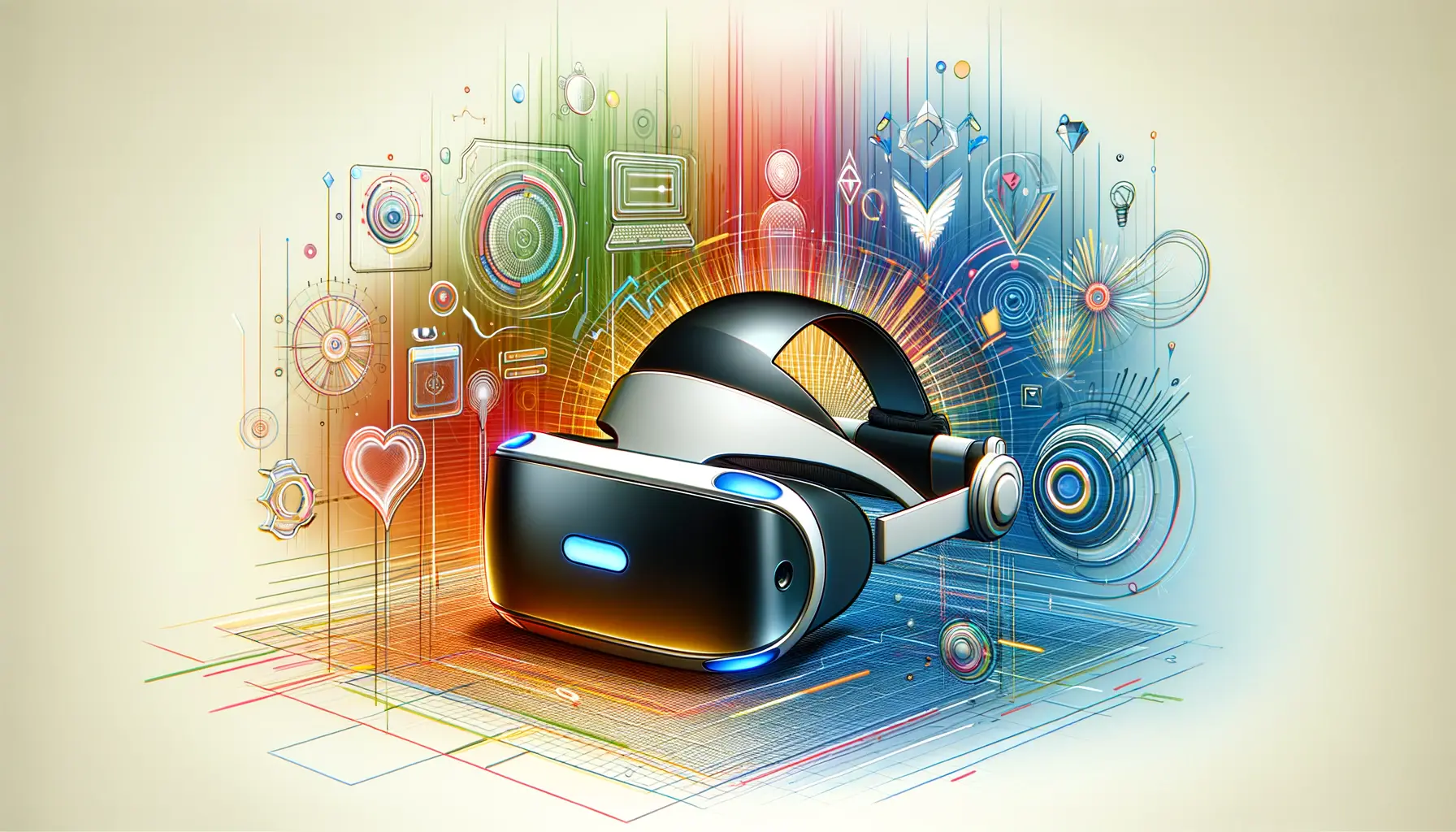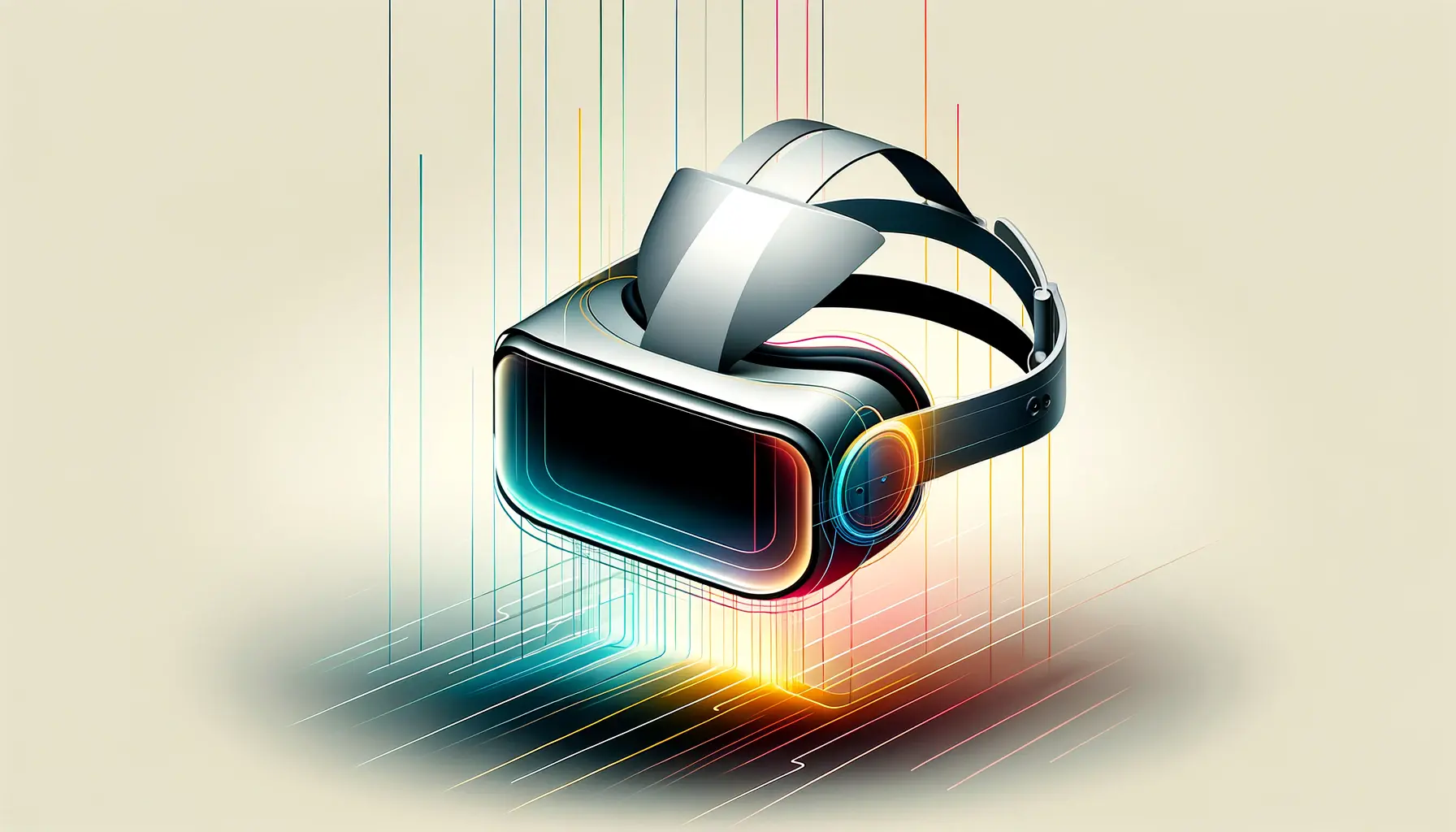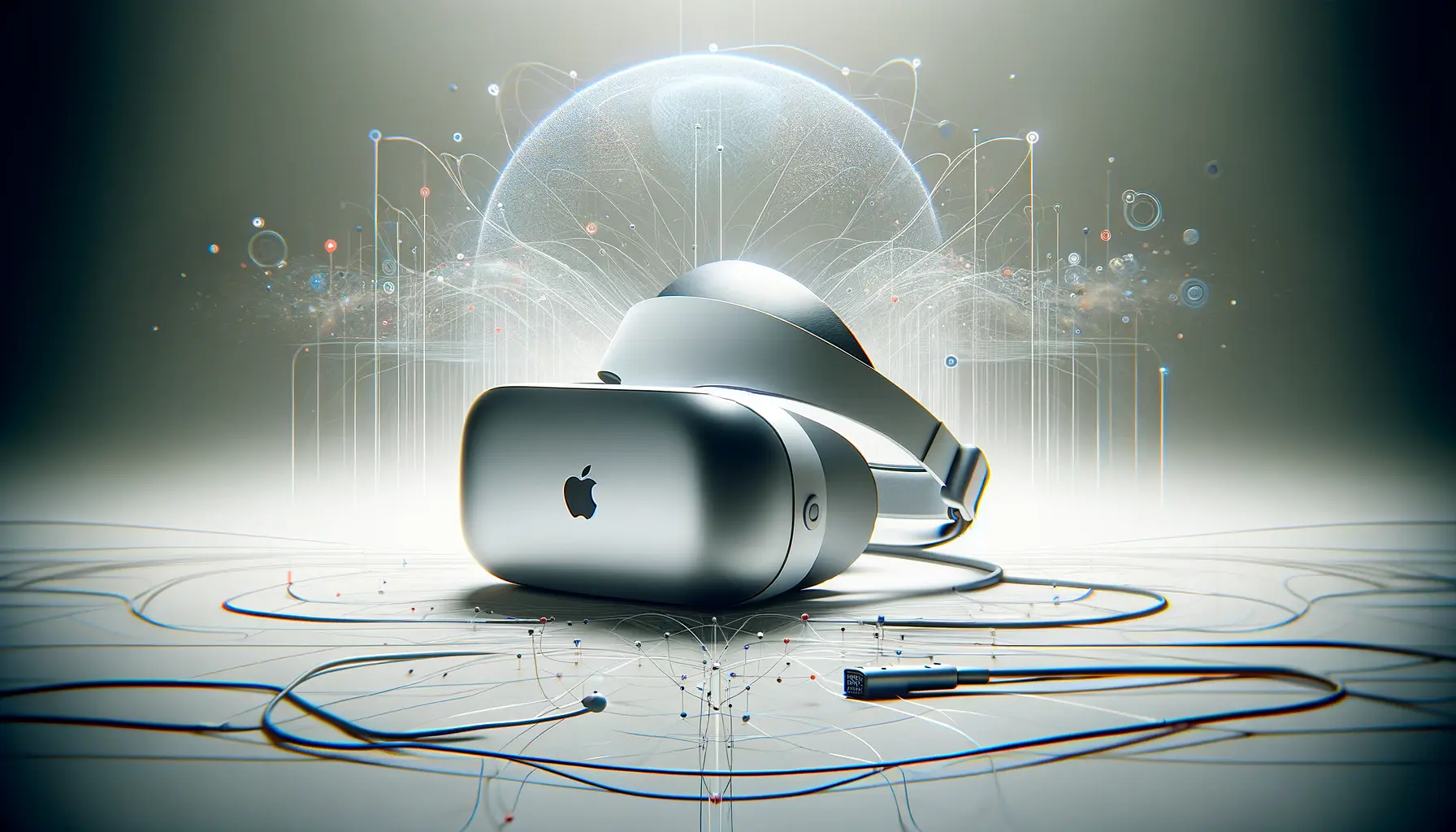The unveiling of Apple Vision Pro marks a significant leap forward in the realm of spatial computing, offering developers an unprecedented opportunity to craft immersive experiences.
As the latest innovation from a company renowned for pushing the boundaries of technology, Apple Vision Pro stands as a testament to the future of interactive applications and games.
This article delves into the essence of Apple Vision Pro, focusing on the pivotal role of developer access in harnessing its full potential.
At its core, Apple Vision Pro is not just a device but a platform that redefines the interaction between digital and physical realms.
With its advanced spatial computing capabilities, developers are invited to explore a new universe of possibilities.
Access to this technology is crucial, as it empowers creators to design applications and experiences that were once the stuff of science fiction.
The focus on developer access underscores Apple’s commitment to innovation, collaboration, and the continuous evolution of its ecosystem.
- Understanding Apple Vision Pro’s Ecosystem
- Key Features and Capabilities
- Exploring the Developer Kit
- Designing for Spatial Computing
- Optimizing Performance for Vision Pro
- Security and Privacy Considerations
- Community and Collaborative Development
- Embracing the Future with Apple Vision Pro
- Apple Vision Pro Access for Developers: FAQs
Understanding Apple Vision Pro’s Ecosystem
The Vision Pro Platform
Apple Vision Pro introduces a groundbreaking platform for developers, characterized by its spatial operating system, visionOS.
This new OS is designed from the ground up to support immersive experiences that seamlessly integrate digital content into the physical world.
Developers have the unique opportunity to utilize visionOS to create apps that go beyond traditional screen boundaries, engaging users in a fully three-dimensional space.
The platform’s robust set of tools, including Xcode and Reality Composer Pro, facilitates the development of spatial applications.
These tools are tailored to meet the needs of developers, offering a blend of familiarity and innovation.
With visionOS, Apple provides a canvas that encourages creativity and technical prowess, allowing developers to bring their most ambitious visions to life.
Access and Developer Kits
To ensure developers can fully leverage the capabilities of Apple Vision Pro, Apple has initiated a program to distribute developer kits.
These kits serve as a bridge, granting developers direct access to the hardware and software necessary to create spatial computing experiences.
The developer kit includes not only the Vision Pro headset but also comprehensive support from Apple, ranging from setup assistance to code-level support requests.
This initiative highlights Apple’s dedication to fostering a vibrant developer community around Vision Pro.
By providing the tools and resources needed to innovate, Apple is setting the stage for a revolution in app development.
The emphasis on access through developer kits is a clear indication of the company’s strategy to ensure the success and adoption of its spatial computing platform.
The Apple Vision Pro developer kit is a cornerstone for unlocking the full potential of spatial computing, offering an unparalleled opportunity for innovation.
Key Features and Capabilities
Apple Vision Pro is engineered with a suite of features and capabilities designed to revolutionize how we interact with digital content.
At the heart of these innovations is the device’s ability to provide an immersive spatial computing experience, blending the digital and physical worlds in ways previously unimaginable.
This section explores the key features that set Apple Vision Pro apart and the capabilities that developers can harness to create groundbreaking applications.
The Vision Pro’s hardware and software are meticulously crafted to deliver a seamless and intuitive user experience.
From its high-resolution displays to the advanced sensors that track eye and hand movements, every aspect of the device is optimized for spatial computing.
The integration of visionOS, Apple’s spatial operating system, further enhances the device’s capabilities, offering a robust platform for developers to build upon.
Immersive Spatial Computing
- 3D Interaction: Developers can create apps that allow users to interact with three-dimensional objects in a natural and intuitive manner, leveraging hand gestures and eye movements.
- Seamless Blending of Worlds: Vision Pro’s technology enables the overlay of digital content onto the physical world, creating mixed reality experiences that are both engaging and realistic.
Advanced Development Tools
- Xcode Integration: Apple’s development environment, Xcode, has been updated to support visionOS, providing developers with familiar tools to create spatial apps.
- Reality Composer Pro: This tool allows for the easy creation and optimization of 3D content for visionOS apps, ensuring high-quality visuals and animations.
Developer Support and Resources
Recognizing the importance of developer success, Apple offers extensive support and resources for those working with Vision Pro.
This includes detailed documentation, design kits, and direct access to Apple’s engineering team for guidance and troubleshooting.
The aim is to create a supportive ecosystem that encourages innovation and helps developers overcome any technical challenges they may encounter.
The combination of immersive spatial computing, advanced development tools, and comprehensive developer support positions Apple Vision Pro as a transformative platform for the future of app development.
Exploring the Developer Kit
The Apple Vision Pro Developer Kit is a comprehensive package designed to equip developers with everything they need to start creating applications for this revolutionary platform.
This kit is not just about providing the necessary hardware; it’s a gateway to a wealth of resources and support from Apple, ensuring developers have the best possible foundation to innovate and create.
Let’s delve into the components of the developer kit and the advantages it offers to those at the forefront of spatial computing development.
At its core, the developer kit includes the Apple Vision Pro headset, a piece of cutting-edge technology that represents the pinnacle of spatial computing.
However, the value of the kit extends far beyond the hardware.
Apple has curated a selection of tools and resources specifically designed to streamline the development process, from initial concept to final product.
Components of the Developer Kit
- Vision Pro Headset: The centerpiece of the kit, providing developers with a firsthand experience of Apple’s spatial computing capabilities.
- Access to visionOS: Developers receive early access to visionOS, allowing them to explore and utilize its unique features.
- Development Tools: Including Xcode and Reality Composer Pro, these tools are essential for creating, testing, and optimizing spatial computing applications.
Benefits for Developers
- Early Access: Developers can start working with Vision Pro and visionOS ahead of the public release, giving them a head start in the new ecosystem.
- Comprehensive Support: From setup assistance to code-level support requests, Apple provides extensive support to ensure developers can focus on innovation.
- Community and Collaboration: Access to the developer kit also means becoming part of a community of innovators, fostering collaboration and knowledge sharing.
The Apple Vision Pro Developer Kit represents a significant investment in the future of spatial computing.
By providing developers with the tools, resources, and support they need, Apple is not only ensuring the success of the Vision Pro platform but also empowering creators to redefine the boundaries of digital experiences.
Access to the Apple Vision Pro Developer Kit is a pivotal step for developers aiming to lead in the era of spatial computing.
Designing for Spatial Computing
Designing applications for spatial computing with Apple Vision Pro requires a paradigm shift from traditional app development.
The immersive nature of spatial computing demands that developers and designers think beyond flat screens to create experiences that engage users in three-dimensional space.
This section explores the principles and considerations essential for designing compelling spatial computing applications on the Vision Pro platform.
At the heart of designing for spatial computing is the understanding of user interaction within a 3D environment.
Developers must consider how users will navigate, interact with, and perceive digital content that coexists with the physical world.
This involves a deep understanding of spatial awareness, ergonomics, and the seamless integration of digital and physical elements.
User Experience in Spatial Computing
- Intuitive Interaction: Designing interfaces that leverage natural movements and gestures, allowing users to interact with 3D content as they would with physical objects.
- Environmental Awareness: Applications must be aware of the user’s environment, adapting content and interactions to fit the physical space around them.
Challenges and Solutions
- Ensuring Comfort: Prolonged use of spatial computing devices can lead to discomfort. Solutions include ergonomic design, intuitive controls, and limiting session lengths.
- Content Adaptability: Developing content that is flexible enough to work in various spatial contexts, ensuring a consistent user experience across different environments.
Designing for spatial computing also involves leveraging the advanced features of the Apple Vision Pro, such as eye-tracking and hand gesture recognition.
These features offer new ways to interact with digital content, enabling more immersive and engaging experiences.
However, they also require developers to think creatively about how to integrate these interactions into their applications in a way that feels natural and intuitive.
Ultimately, designing for spatial computing on the Apple Vision Pro is about creating experiences that enhance the user’s interaction with the digital world, making it more immersive, intuitive, and meaningful.
By understanding the unique capabilities and considerations of spatial computing, developers can unlock the full potential of this exciting new platform.
Designing for spatial computing is a complex but rewarding challenge, requiring a deep understanding of both technology and human interaction.
Optimizing Performance for Vision Pro
Developing for Apple Vision Pro involves not only creating immersive experiences but also ensuring these experiences run smoothly and efficiently.
Performance optimization is crucial in spatial computing, where real-time interaction and high-fidelity graphics are standard.
This part of the article discusses strategies for optimizing applications to deliver the best possible performance on the Vision Pro platform.
Optimization encompasses various aspects, from rendering techniques to resource management, all aimed at enhancing the user experience without compromising the quality of the application.
Developers must balance the demands of detailed 3D environments, complex interactions, and the hardware capabilities of the Vision Pro to achieve this goal.
Efficient Use of Graphics Resources
- Level of Detail (LOD) Techniques: Implementing LOD can significantly reduce the rendering load by adjusting the complexity of 3D models based on their distance from the user.
- Texture Optimization: Compressing textures and using mipmaps can help reduce memory usage and improve rendering performance without noticeably affecting visual quality.
Real-time Interaction Optimization
- Physics Simulations: Optimizing physics calculations by limiting the complexity of collision detection and using simplified models for background objects.
- Input Latency Reduction: Implementing efficient event handling for eye tracking and hand gestures to minimize input latency, ensuring a responsive user experience.
Another critical aspect of performance optimization for Apple Vision Pro is power management.
Spatial computing applications can be resource-intensive, potentially leading to high power consumption.
Developers need to implement strategies to manage power usage effectively, such as adjusting the application’s performance based on battery life or optimizing the use of sensors and other hardware components.
By focusing on these optimization strategies, developers can create Apple Vision Pro applications that not only offer immersive and engaging experiences but also run efficiently, providing users with smooth, responsive interactions.
This balance is key to unlocking the full potential of spatial computing on the Vision Pro platform.
Performance optimization is essential for creating seamless and immersive experiences on Apple Vision Pro, requiring a careful balance between visual fidelity and resource efficiency.
Security and Privacy Considerations
In the realm of spatial computing with Apple Vision Pro, security and privacy emerge as paramount concerns.
As developers create applications that blend digital content with the physical world, they must navigate the complexities of protecting user data and ensuring a secure interactive environment.
This section outlines the critical security and privacy considerations developers must address when building for the Vision Pro platform.
Apple’s commitment to user privacy and security is well-documented, and the Vision Pro platform is no exception.
Developers have the responsibility to uphold these standards, implementing robust security measures and respecting user privacy in their applications.
This involves careful handling of sensitive data, especially when dealing with spatial information that could potentially reveal details about a user’s environment.
Implementing Data Protection
- Encryption of Data: Ensuring all user data, particularly spatial data that may be sensitive, is encrypted both in transit and at rest.
- Minimal Data Retention: Adopting a policy of collecting only the data necessary for the application to function and retaining it for no longer than needed.
Ensuring User Consent and Transparency
- User Permissions: Clearly requesting and obtaining user consent for accessing camera feeds, location data, or other sensitive inputs.
- Privacy Policies: Providing users with transparent and accessible privacy policies that detail how their data is used, stored, and protected.
Moreover, developers must be vigilant about potential security vulnerabilities within their applications, regularly updating and patching any issues to protect against exploitation.
This is particularly important in spatial computing, where real-time data processing and external hardware interfaces present unique security challenges.
By prioritizing security and privacy in the development process, creators can build trust with their users, ensuring that experiences on the Apple Vision Pro are not only immersive and engaging but also safe and respectful of user privacy.
This commitment to security and privacy is essential for the long-term success and adoption of spatial computing technologies.
Neglecting security and privacy considerations in spatial computing can lead to significant risks, undermining user trust and the overall integrity of the platform.
Community and Collaborative Development
The advent of Apple Vision Pro and its spatial computing capabilities heralds a new era of collaborative development.
As developers embark on creating applications for this innovative platform, the role of community and collaboration becomes increasingly significant.
This final section explores how developers can leverage community resources and collaborative efforts to enhance their Vision Pro projects.
Apple’s ecosystem has always been characterized by a strong sense of community among developers.
With the introduction of Vision Pro, this community is set to play a crucial role in sharing knowledge, resources, and support.
By engaging with other developers, individuals can learn from shared experiences, discover new techniques, and overcome challenges more efficiently.
Leveraging Developer Forums and Resources
- Participation in developer forums and online communities can provide invaluable insights into best practices, optimization strategies, and innovative uses of Vision Pro’s capabilities.
- Apple’s own developer resources, including documentation, tutorials, and code samples, are essential tools for anyone looking to build applications for Vision Pro.
Open Source Contributions and Collaborations
- Engaging with open source projects related to Vision Pro can accelerate development efforts, allowing developers to contribute to and benefit from collective advancements in spatial computing.
- Collaborative projects offer opportunities to tackle complex problems, share development burdens, and innovate through collective creativity and expertise.
The collaborative development environment surrounding Apple Vision Pro encourages a culture of sharing and innovation.
By participating in this ecosystem, developers not only contribute to the growth and success of Vision Pro applications but also gain access to a wealth of knowledge and experience from the broader community.
In conclusion, the development of applications for Apple Vision Pro is not just a technical endeavor but a collaborative journey.
Through community engagement, open source contributions, and collaborative projects, developers can push the boundaries of what’s possible in spatial computing, creating experiences that are not only technologically advanced but also enriched by the collective wisdom of the developer community.
The strength of the Apple Vision Pro developer community lies in its collaborative spirit, driving innovation and overcoming challenges through shared effort and knowledge.
Embracing the Future with Apple Vision Pro
The journey through the realms of Apple Vision Pro and its ecosystem for developers unveils a landscape brimming with potential and innovation.
As we’ve explored the various facets of this groundbreaking platform, from its core capabilities and developer support to the intricacies of designing and optimizing for spatial computing, a clear narrative emerges.
Apple Vision Pro is not merely a technological advancement; it represents a paradigm shift in how we interact with digital content, blurring the lines between the physical and digital worlds.
The Path Forward for Developers
The introduction of Apple Vision Pro offers developers an unparalleled opportunity to pioneer in a new domain of computing.
With access to the developer kit, detailed guidance on designing for spatial environments, and strategies for optimization, developers are equipped to create immersive experiences that were once the realm of imagination.
The emphasis on security, privacy, and collaborative development further enriches the ecosystem, ensuring that applications not only dazzle users but also respect their rights and contribute to a vibrant community of innovators.
Key Takeaways
- Apple Vision Pro’s spatial computing capabilities open new avenues for application development, offering users experiences that are immersive, intuitive, and engaging.
- Developer access to tools, resources, and community support is crucial in harnessing the full potential of Vision Pro, encouraging innovation and ensuring the platform’s growth.
- Designing for spatial computing requires a thoughtful approach to user interaction, performance optimization, and the seamless integration of digital content into the physical world.
- Security and privacy considerations are paramount, underscoring the need for developers to implement robust protections for user data.
- The collaborative spirit within the Apple Vision Pro developer community plays a vital role in overcoming challenges and pushing the boundaries of what’s possible in spatial computing.
In conclusion, Apple Vision Pro access for developers is more than just an invitation to explore new technology.
It’s a call to action for creative minds to redefine the future of interactive experiences.
As developers embark on this exciting journey, the fusion of innovation, collaboration, and a deep understanding of the platform’s capabilities will be key to unlocking the transformative potential of Apple Vision Pro.
The road ahead is filled with possibilities, and the time is now for developers to seize the opportunity and shape the future of spatial computing.
If you're seeking expertise in Apple Search Ads campaigns, visit our service page for professional management!
Apple Vision Pro Access for Developers: FAQs
Delve into the most common inquiries about Apple Vision Pro access for developers, providing insights into the platform’s capabilities, developer support, and more.
Apply through the Apple Developer website, providing details about your development skills and existing apps to gain access to the kit.
The kit includes the Vision Pro headset, access to visionOS, and development tools like Xcode and Reality Composer Pro.
Yes, familiar frameworks and tools such as Xcode, SwiftUI, and RealityKit are extended for use with visionOS and Vision Pro.
VisionOS supports immersive spatial computing, offering developers a platform to create apps that blend digital content with the physical world.
Apple offers setup assistance, code-level support requests, and check-ins with experts to guide developers through the app creation process.
Developers must ensure data encryption, minimal data retention, and obtain user consent for accessing sensitive inputs like camera feeds.
Optimization strategies include using LOD techniques, texture compression, and efficient physics simulations to enhance app performance.
Yes, developers can engage with forums, participate in open source projects, and collaborate with others in the Vision Pro developer community.
